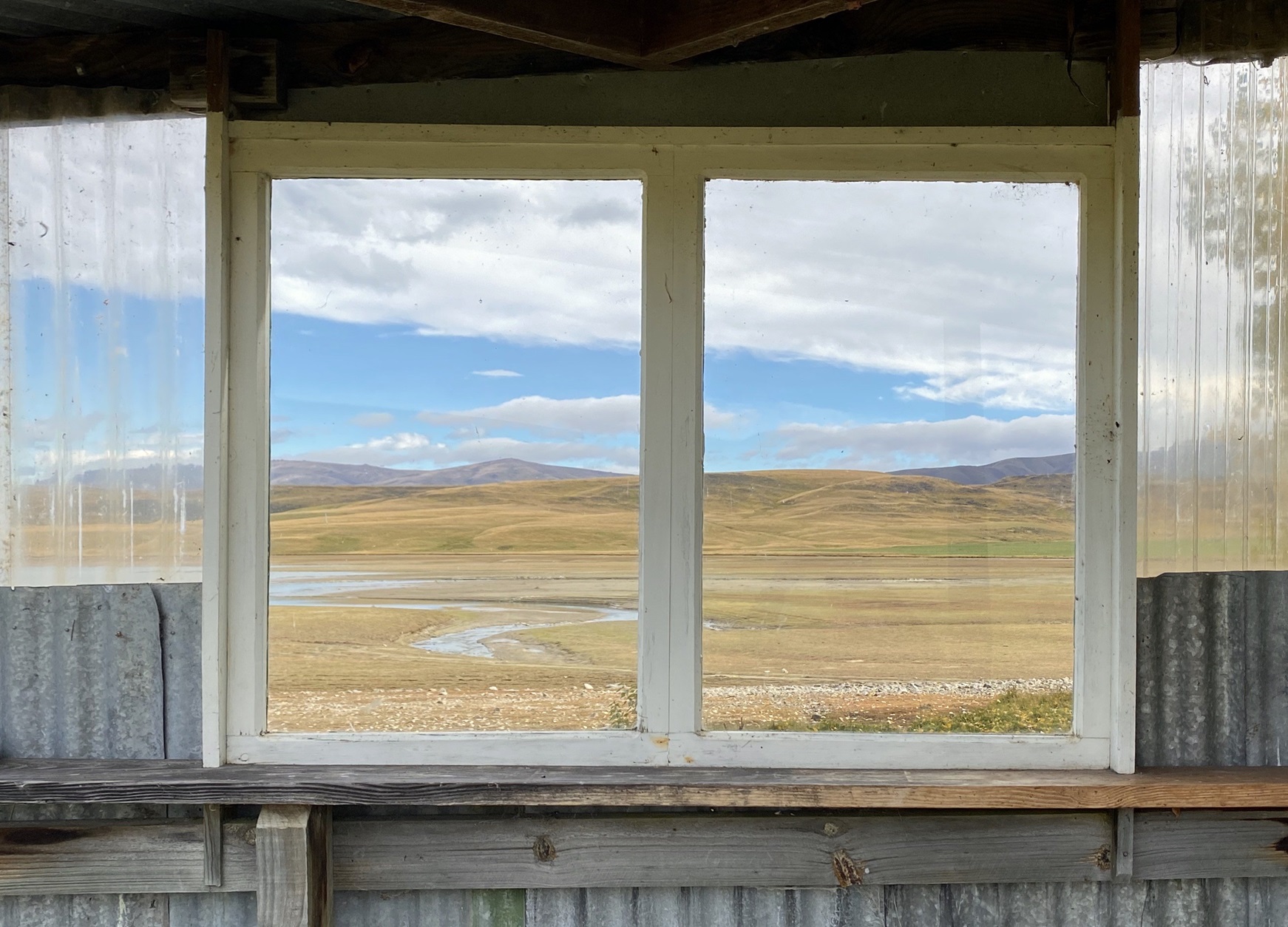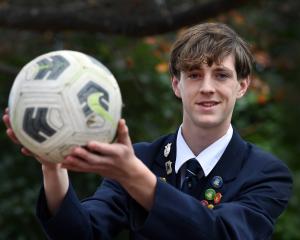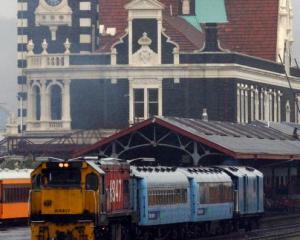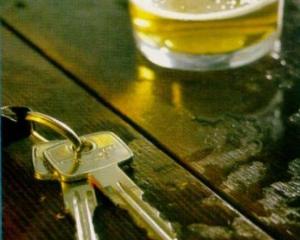
No-one loves a good road trip more than Sara McIntyre, but she does have one gripe — she only gets to skim the surface of a new place.
So to get the chance to spend weeks in one place and get to know a community is her dream. She is getting that chance as the inaugural Forrester Gallery Residency recipient.
The residency not only gives her a stipend to support her time in the Waitaki district, but she also gets the use of a cottage at Kakanui for about two months. So instead of moving on every few days in her campervan, she can settle in and explore the region.
It is something McIntyre has always wanted to do. She has had a soft spot for Otago, as her family comes from Dunedin. Her grandfather Peter McIntyre sen (1862-1932) was a prominent commercial artist who created political cartoons for the Otago Daily Times and made lithographs while her father, also Peter McIntyre (1910-95), was renowned as New Zealand’s official World War 2 artist.
"Both my parents were brought up in Dunedin. In fact, all my New Zealand ancestors are all Dunedin. I think I was one of the first born in the North Island."
McIntyre grew up in Wellington but spent a lot of time in Dunedin visiting her grandmother, aunts and family. She also went to George Street Normal School for a term.
"I just remember being rather miserable. It was winter and I didn’t fit in."
It was through her father that she was introduced to cameras. He saw himself as a painter but took a lot of photographs.
"We were brought up with cameras and taking photos, but painting was his thing."

"This would have been in the ’70s. And he said, ‘You know, your photographs are good. You need a better camera’. I went round Europe in the early ’70s with an Instamatic — you know, one of those cameras where you put the cartridge in. And he was horrified by that."
Taking photographs became McIntyre’s "thing". Even back then she remembers wanting to tell a story, rather than worrying about the technical aspects of it.
"I just didn’t care about quality. You know, I travelled for months in an old ambulance with my 3-year-old twins."
She went to university but says she was not a great student.
Then, when she had children, she found the rounds of coffee mornings a bit tedious so decided to train as a nurse.
"I got right into it and loved it. And I think it sort of helped that I was a bit older because I just knew that’s what I wanted to do. So it was more sort of wanting to be employable."
Photography had fallen away in the intervening years but working in hospitals inspired her to pick a camera up again. As an neonatal intensive care nurse, she began taking photographs of babies in the unit. She was then asked to take photos of babies who had died.
"That was the sad part of it. They were extremely private photos and then I just got a reputation within the hospital. It was just always a huge interest to me.
"The family always referred to me as the family photographer. If there was any photo [that] needed taking, it was call Sara."

Her family had land in Kakahi. Keen trout fishers, they often visited over the years.
"I just started coming here a lot. And then I decided to come and live here and give it a go."
She took a month off to see how she found it and discovered at the end of that month she did not want to go back to the city.
"It’s just peaceful and it’s sort of low-key. I live above the river. And I have the best of both worlds. I go to Auckland quite a lot and Wellington. I just find it nice and easy living here and people come and go and that’s really nice."
McIntyre also found plenty of inspiration in Kakahi. While she was only supposed to be a casual district nurse in the area, the job soon became fulltime.
Photographing people is her great love.
"It’s really almost like an extension of conversations. And it’s an excuse, in a way, to talk to people. I sometimes stop and ask people if they mind if I take a photograph. And I’m amazed at how amiable people are. They like to tell you about their lives. I think I’m a frustrated writer. Taking photographs is a really nice way of doing it. And to me, a photograph actually tells the story better, in a different way."
It was during this time that she began taking photographs of people in their homes after seeing things she thought would make a great photograph.
"I think that sort of became obvious to me when I was district nursing, because as a nurse, you’re seeing them in their home and it means a hell of a lot more than if you see them somewhere else. I quite like photographing people in their gardens as well."

"I couldn’t lug my big Nikon camera around with me while I was visiting people in their homes to do their wounds and things."
These days, she takes photographs on both, depending on the situation. Exhibition photography still requires the use of a professional camera.
"The iPhone is just convenience when you haven’t got a camera with you. And there are times when it’s almost more appropriate because it’s not a big camera in your face. And I find people are much less self-conscious about a phone."
She began to put some of her photographs on Instagram and was picked up by Anna Miles Gallery in Auckland. She had her first solo exhibition in 2016 — "an incredible break".
In 2020, she put together a book of her photographs, Observations of a Rural Nurse, featuring the landscapes and people she had come across while living and working in the King Country.
"This is where I’ve probably taken most of my photographs."
McIntyre says she can spot a good photograph almost instantly.
"I don’t really think about it. It’s just there in your face. I can get quite frustrated because I will sometimes have an idea and try and make it work. But really, it has to sort of be obvious from the start."
People are either good to photograph or they are not, she says.
"There’s nothing personal. It’s when the photograph also tells you something about that person. You know, that’s why I quite like photographing people in their home ... I could never do it in a studio."

With the days now her own, she "traipses around", often taking her van on road trips about the countryside.
"I spend a few weeks going up to the Hokianga or Northland or down south. And I’ve done quite a few road trips down south."
On those southern trips, she never managed to visit Kakanui, so is looking forward to it.
"I don’t really have a plan. I just know the sort of photographs I like doing, and I think that it will sort of fall into place, I hope.
"So this will give me the opportunity to really have a more in-depth look and I just know the way it goes that things will pop up."
Waitaki District Council arts, culture and libraries manager Chloe Searle says the up-to-two-month residency is an exciting way to introduce different artists to the Waitaki district and see how they respond to "our place" in whatever way they create. Artists will be invited to take part.
"It means we obviously get some interesting work to exhibit which is really exciting and a wonderful spinoff for the the project."
It is also another way to extend the Forrester’s reach across New Zealand and comes at a great time when the gallery has just celebrated its 40th and is in the midst of a building project.
For the first year, the Friends of Forrester and the J.W. Christie Trust have helped fund the residency and the cottage is being provided free of charge.
"We are hoping the Friends and the local arts community will work to provide the stipend each year."












